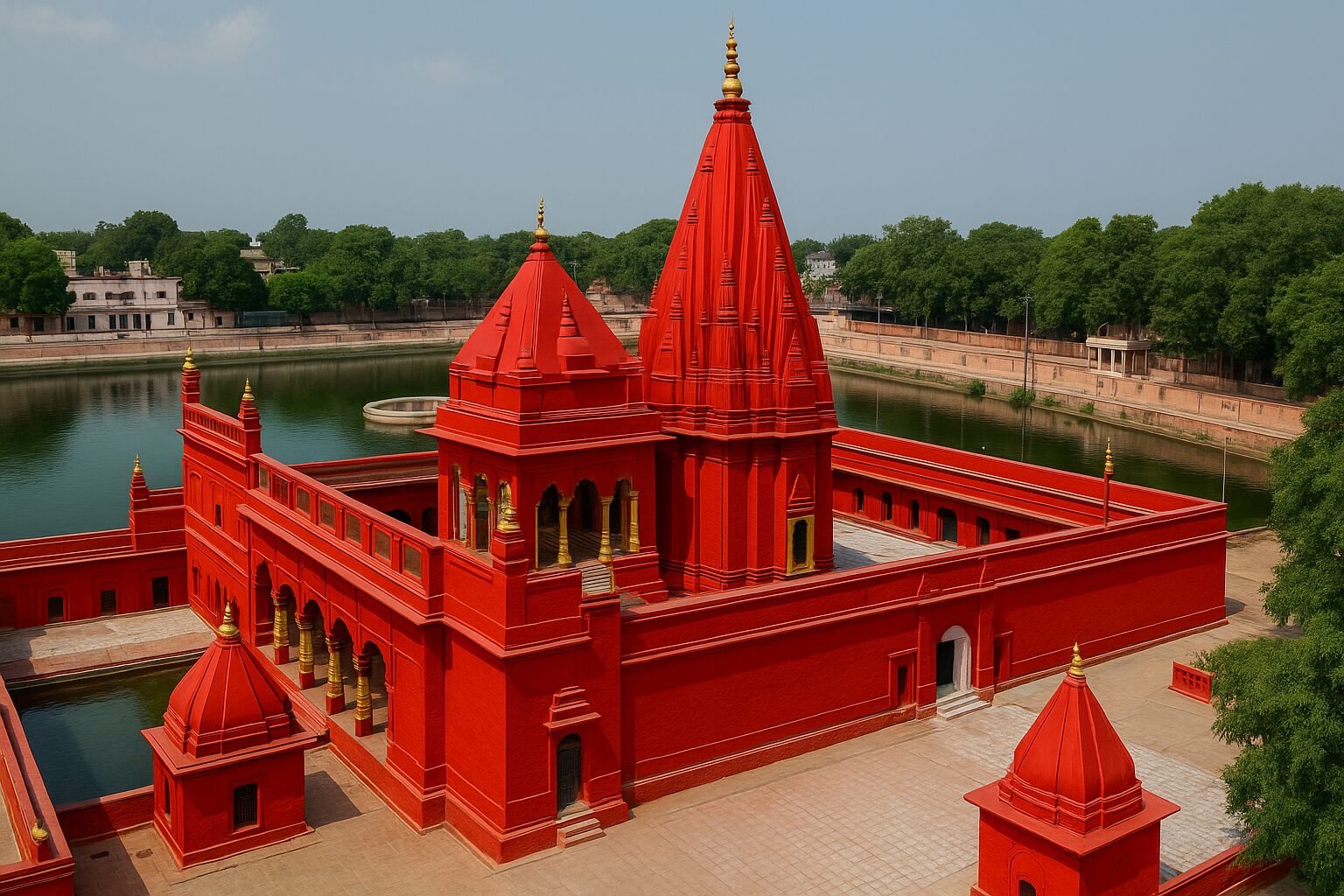The Fiery Guardian Goddess of Varanasi
Standing tall in vibrant red near the sacred waters of the Durga Kund, the Durga Mandir is one of the most revered and visually striking temples of Varanasi. Often referred to as the “Monkey Temple” due to the large population of monkeys on its premises, this shrine is dedicated to Goddess Durga, the fierce embodiment of Shakti (divine feminine power).
Historical Background
Built in the 18th century by a Bengali Maharani (often believed to be Rani Bhabani of Natore), the temple is a fine example of North Indian Nagara-style architecture, with its multi-tiered shikhara (spire), intricate carvings, and a commanding red hue symbolizing the fiery nature of the goddess.
Unlike some temples where idols are installed through rituals, the idol of Durga in this temple is believed to have appeared on its own (swayambhu) — making it a powerful center of spiritual energy.
Durga Kund (Sacred Pond)
Adjacent to the temple lies the Durga Kund, a rectangular pond believed to be connected to the Ganga through underground channels. Devotees often perform rituals on its banks, especially during Navratri, when the temple becomes a riot of colors, hymns, and celebrations in honour of the Goddess.
Spiritual Significance
-
Goddess Durga is worshipped here in her warrior form — the slayer of evil and protector of the righteous.
-
The temple is especially popular among women devotees, who pray here for strength, protection, and family welfare.
-
The idol is depicted with multiple arms, holding weapons, and seated on a lion — a symbol of valor, justice, and divine rage.
Monkey Connection
The temple is home to numerous mischievous yet mostly harmless monkeys, which roam freely in the compound. This has earned it the nickname “Monkey Temple”, although it is not to be confused with the Sankat Mochan Hanuman Temple nearby.
Festivals and Rituals
-
Navratri: The temple hosts grand celebrations during this 9-day festival, with daily aartis, cultural programs, and an influx of devotees.
-
Durga Puja: Although more prominent in Bengal, the temple becomes a hub of spiritual activity during this time as well.
-
Daily morning and evening aartis are conducted, often accompanied by drums and bells.


